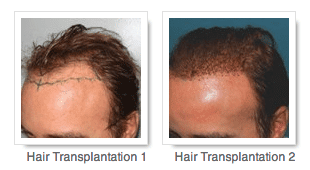When someone experiences hair loss, he or she might suffer from decreased self esteem. A hair transplant can potentially help increase self confidence. You should keep in mind that a hair transplant will not create new hair. Both men and women experience hair loss. It’s generally associated with age and genetics, although that’s not the case in all hair loss. What happens when you get hair transplants? Before your transplant, your doctor will assess how much hair loss you’ve had, how much hair is available for the transplant and the quality of that hair, how much hair you will potentially lose in the future, the color contrast of the transplanted hair and the body wave of your hair. You and your doctor will discuss what pattern would work best for your hair transplant. You should discuss with your doctor what your expectations should be for the transplant. Also, it’s important to understand how much the procedure will cost and whether you can anticipate wanting additional hair transplants. The technique each doctor uses will vary from practice to practice. Some doctors use what’s known as follicular unit grafts. During a follicular unit graft procedure, you will most likely be awake for your hair transplant. The doctor will use an anesthetic to numb the area where he or she is working. To start the transplant, your doctor will take a strip of hair from the back of your head. This area of your head generally has healthy hair that hasn’t been affected by dihydrotestosterone, a hormone that can cause hair to deteriorate. This means that hair transplanted from this area shouldn’t be affected by the hormone that likely caused you to lose hair in the first place. The doctor will stitch the back of your head where the donor site is back together to ensure the best healing. Next, the doctor will place the strip of hair under a microscope and divide it into hair grafts. These grafts are made up of one to three follicle units. The doctor will create small puncture sites where the hair grafts will be placed. The goal is for the grafts to be placed in a pattern that will mimic your natural hairline. The transplanted hair will likely fall out, but the follicles that were transplanted will stay. You should see results in a few months. About a year after your transplant, you should see significant results. On average, hair transplant recipients receive about 1,500 grafts, which factors out to between 3,500 and 4,000 follicles. The surgery will take about four hours. Does it hurt? During the procedure, you should only feel slight, if any, pain. Pain will vary from patient to patient and depending on which hair transplant procedure you choose. After the procedure, the area where the hair was taken will probably be sore for a few days. What are the risk factors? With any surgery, there’s a risk of bleeding and infection. Patients who undergo a hair transplant also run the risk of scarring and unnatural looking hair growth. Your risk of side effects is lowered if you are not a smoker and are in good health. You might experience oozing from the graft sites, but that should disappear within a few days. What’s the recovery time? Your recovery time will depend on how many grafts you receive and how much hair loss you had to begin with. If you had significant hair loss, your hair transplant might be less conspicuous than someone who has more hair to hide the redness from the transplant. The sutures that were placed in the hair transplant site will likely be taken out within 10 days of your surgery. What’s the follow-up? Whether you need another hair transplant is up to you. Some people might want to have another. This decision will depend on your hair loss, the amount of hair you have to transplant and how much you would like to spend on the procedure.

